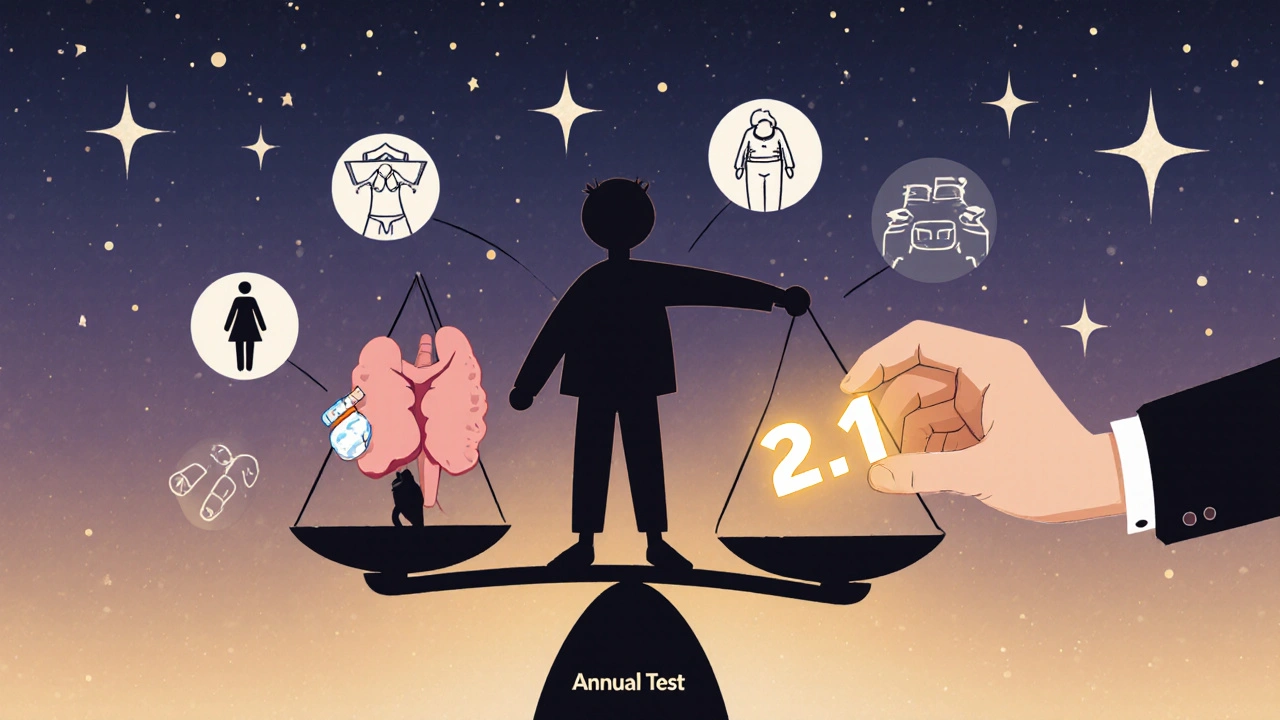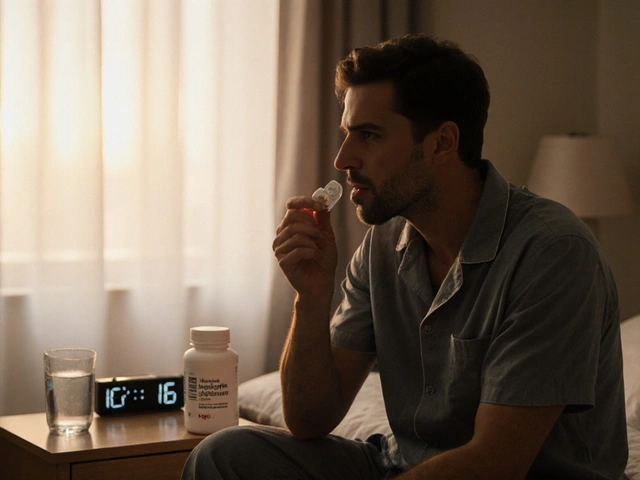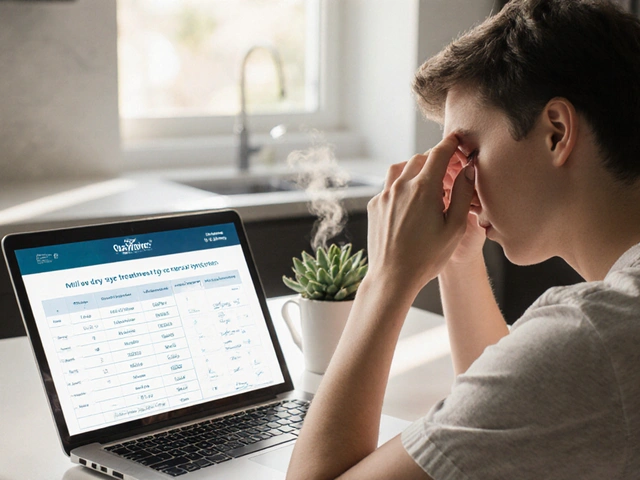
Hashimoto’s thyroiditis isn’t just another thyroid issue-it’s the most common cause of hypothyroidism in places like Australia, the US, and Europe. If you’ve been told your thyroid is underactive, there’s a good chance Hashimoto’s is behind it. About 90% of hypothyroidism cases in iodine-sufficient areas come from this autoimmune condition, where your immune system mistakenly attacks your own thyroid gland. It’s not something you catch from a virus or bad diet. It’s your body turning on itself. And while it can’t be cured, it can be managed-with one simple blood test: TSH.
What Happens When Your Immune System Attacks Your Thyroid
Your thyroid is a small butterfly-shaped gland in your neck. It makes hormones that control your metabolism, energy, temperature, and even your mood. In Hashimoto’s, your immune system sends antibodies-mainly thyroid peroxidase antibodies (TPOAb)-to destroy thyroid tissue. Over time, the gland gets damaged and can’t produce enough hormone. That’s when hypothyroidism kicks in.Women are 5 to 10 times more likely to develop Hashimoto’s than men. It often shows up between ages 30 and 50, but it can strike at any age. Genetics play a role-if a close family member has it, your risk goes up. So do other autoimmune conditions like type 1 diabetes, celiac disease, or rheumatoid arthritis.
The scary part? You might feel fine for years. Fatigue, weight gain, dry skin, and brain fog are easy to blame on stress, aging, or lack of sleep. By the time you get tested, your thyroid may already be significantly damaged. That’s why TSH is the first line of defense.
Why TSH Is the Only Test You Really Need for Monitoring
TSH stands for thyroid-stimulating hormone. It’s made by your pituitary gland, and it tells your thyroid: “Make more hormone.” When your thyroid is underperforming, your pituitary pumps out more TSH to try to fix it. So high TSH = low thyroid function. Simple.For decades, doctors checked T4 and T3 levels too. But research has shown that in primary hypothyroidism-like Hashimoto’s-TSH is the most accurate and reliable indicator of how well your treatment is working. The American Thyroid Association, the Cleveland Clinic, and the American Association of Clinical Endocrinologists all agree: if you have no signs of pituitary disease, you don’t need to test T4 or T3 regularly. Just TSH.
That’s a game-changer. Fewer blood draws. Lower costs. Less confusion. You don’t need to track antibody levels either. TPOAb might be high when you’re first diagnosed, but those numbers don’t tell you if your medication dose is right. They won’t drop just because you’re on levothyroxine. So retesting them every few months? Useless. The ATA says it plainly: “Repeating thyroid antibody levels is not needed.”
Levothyroxine: The Standard Treatment, and How to Get It Right
Levothyroxine (LT4) is the only medication you need. It’s a synthetic version of T4, the main hormone your thyroid makes. Your body converts it to T3, the active form. That’s why it works so well for Hashimoto’s.Dosing isn’t one-size-fits-all. Most adults start at 1.4 to 1.8 mcg per kilogram of body weight. For someone weighing 70 kg, that’s about 100 mcg per day. But if you’re older, have heart problems, or are just starting with mild hypothyroidism, doctors often begin lower-25 to 50 mcg. Why? To avoid stressing your heart.
It takes time for your body to adjust. Levothyroxine has a long half-life-about 7 days. That means it builds up slowly. Your pituitary gland also needs 6 to 8 weeks to respond to the new hormone levels and reset TSH. That’s why you can’t test too soon after a dose change. Testing at 4 weeks? You’ll get misleading results. Waiting 6 to 8 weeks is non-negotiable.
Adjustments are usually made in 12.5 to 25 mcg increments. If your TSH is still high after 8 weeks, your dose goes up. If it’s too low and you’re feeling jittery or having trouble sleeping, it goes down. It’s a slow dance. Many people need 2 to 3 adjustments before they land on the right dose.

When and How Often Should You Test TSH?
Timing matters. Here’s the real-world schedule most doctors follow:- Test TSH 6 to 8 weeks after starting levothyroxine
- Test again 6 to 8 weeks after every dose change
- Once stable, test once a year
Some guidelines say 4 to 6 weeks. Others say 10. But 6 to 8 weeks is the sweet spot. The Mayo Clinic, AAFP, and RACGP all align here. Why? Because that’s how long it takes for your body to reach steady state.
Once you’re stable, annual testing is enough-unless something changes. That’s the key. If you gain or lose more than 10% of your body weight, start or stop birth control, begin taking iron or proton pump inhibitors (like omeprazole), or become pregnant, you need a blood test right away. These things alter how your body absorbs or uses levothyroxine.
Pregnancy is a whole different ballgame. If you have Hashimoto’s and are trying to conceive-or already pregnant-your TSH target drops. The ATA recommends keeping TSH below 2.5 mIU/L in the first trimester. Why? Because your baby relies on your thyroid hormones in the first 12 weeks. Your body needs more hormone, so your dose often increases by 25 to 50%. Test every 4 weeks until week 20, then every 6 to 8 weeks until delivery.
What Symptoms Tell You (and What They Don’t)
You might feel tired, cold, or bloated. That doesn’t always mean your dose is too low. You might feel anxious, shaky, or have heart palpitations. That doesn’t always mean you’re overmedicated.Symptoms are clues-not proof. Many people with Hashimoto’s have lingering symptoms even when their TSH is in range. That’s frustrating. But studies show that pushing TSH lower than 0.4 mIU/L doesn’t reliably improve energy or mood. In fact, it can increase the risk of bone loss or heart rhythm problems.
There’s one exception: a 2023 JAMA study found that people with a specific gene variant (DIO2) feel better with TSH targets between 0.4 and 2.0 mIU/L. But this isn’t routine testing. It’s still research. Don’t ask for a gene test unless you’re in a clinical trial.
What you should do: Track your symptoms honestly. Note changes in energy, weight, mood, hair, skin, or digestion. Bring them to your doctor. But don’t demand a dose change just because you feel off. Wait for the 6- to 8-week window. Your TSH will tell you what’s really going on.

What About T3 or Natural Thyroid Medications?
Some clinics push “natural” thyroid extracts like Armour Thyroid, which contain both T4 and T3. Others suggest adding synthetic T3 (liothyronine) to levothyroxine. The idea? “Your body needs both.”But here’s the truth: Your body already makes T3 from T4. In 95% of people, that works perfectly. The Cochrane Review analyzed over 20 studies and found no consistent benefit to adding T3. People didn’t feel better. Their TSH didn’t improve. And side effects-like heart racing or anxiety-were more common.
The FDA and major endocrine societies still recommend levothyroxine monotherapy as the gold standard. If you’re still symptomatic with a normal TSH, the answer isn’t more hormones. It’s checking for other issues: low iron, vitamin D deficiency, sleep apnea, or depression. Hashimoto’s doesn’t exist in a vacuum.
What You Can Do Today
If you’ve just been diagnosed:- Take your levothyroxine on an empty stomach, at least 30 to 60 minutes before breakfast
- Avoid calcium, iron, or soy supplements within 4 hours of your dose
- Stick to one brand of levothyroxine. Switching generics can cause TSH swings
- Keep a symptom journal: energy, sleep, weight, mood
- Don’t test TSH too early. Wait 6 to 8 weeks after starting or changing dose
- Get your TSH checked annually after stabilization
If you’ve been on medication for years and feel fine, don’t stop testing. Hypothyroidism can change. Your needs shift with age, weight, stress, or illness. A yearly TSH check takes 5 minutes. It could prevent a cascade of symptoms down the line.






Steve Harris
November 19, 2025 AT 22:15Just wanted to say this is one of the clearest explanations of Hashimoto’s I’ve ever read. TSH as the compass? Perfect metaphor. I’ve been on levothyroxine for 8 years and still get asked why I don’t ‘try natural remedies.’ This post shuts that down with science, not attitude.
Mark Kahn
November 20, 2025 AT 03:06Love this. Seriously. I’m a nurse and I send this link to every new patient with Hashimoto’s. No fluff, no hype, just facts. And the part about waiting 6–8 weeks before retesting? Lifesaver. So many people panic and demand changes too early.
Shawn Sakura
November 20, 2025 AT 05:14omg YES. i was diagnosed last year and my doc kept changing my dose every 4 weeks bc i 'felt worse'... turned out i was just stressed from work. waited 8 weeks, got my tsh checked, and boom-perfect. no need to overcomplicate it. also, dont switch brands. i went from levoxyl to synthroid and my tsh went nuts. lol.
Erika Sta. Maria
November 21, 2025 AT 03:52Oh please. TSH is the only test? That’s what they told me too-until I found out my free T3 was borderline low and my reverse T3 was sky-high. Your 'science' is outdated. Big Pharma doesn’t want you to know about T3 because they can’t patent it. I switched to natural desiccated thyroid and my energy returned like magic. TSH is just a number-they’re gaslighting you.
Nikhil Purohit
November 21, 2025 AT 09:56Thanks for breaking this down so clearly. I’ve been trying to understand this since my diagnosis and this finally makes sense. The part about pregnancy targets was eye-opening-I’m trying to conceive and didn’t realize TSH needs to be under 2.5. I’m going to ask my endo about this next week.
Debanjan Banerjee
November 22, 2025 AT 22:38While Erika’s comment is emotionally compelling, it’s also dangerously misleading. The Cochrane Review explicitly states no clinical benefit from T3 add-on therapy in euthyroid patients. The JAMA study on DIO2 variants is observational and not yet actionable in routine care. Relying on anecdotal T3 success stories ignores population-level evidence. Stick to guidelines. Your thyroid isn’t a crypto coin to be traded for placebo effects.
Michael Marrale
November 23, 2025 AT 16:17Wait… so you’re telling me the FDA and big pharma are just letting us take a synthetic hormone and calling it a day? What about the glyphosate in our water? The EMFs from our phones? The fluoride? They’re all suppressing our thyroid and nobody’s talking about it. TSH is a distraction. The real fix is a 30-day cleanse with Himalayan salt, infrared saunas, and no Wi-Fi. I’ve been off meds for 2 years and my TSH is normal now. Coincidence? I think not.
David vaughan
November 24, 2025 AT 18:53Just wanted to say… thank you. Seriously. I’ve been on levothyroxine for 11 years. I’ve had 3 different endocrinologists. One told me to test every 3 months. One said never test unless I feel bad. One said TSH is everything. This… this is the first time I’ve heard someone explain why TSH is enough. I feel… seen. 😊
Cooper Long
November 25, 2025 AT 15:26Well-articulated. The emphasis on evidence-based monitoring aligns with international clinical standards. The avoidance of ancillary testing without indication reflects prudent resource allocation. One may only hope such clarity becomes the norm rather than the exception in endocrine practice.
Sheldon Bazinga
November 26, 2025 AT 04:15Lmao another white dude with a clipboard telling us what to do. Meanwhile, in India, they’ve been using ashwagandha and turmeric for 5000 years. You think your TSH test is better than Ayurveda? I’ve been on herbs for 4 years. My TSH is 1.8. I don’t need your synthroid. Go drink your lab results and cry.
Sandi Moon
November 27, 2025 AT 02:40How quaint. You presume that the American Thyroid Association speaks for all of medicine. In Europe, we’ve long recognized the limitations of TSH-centric management. The UK’s NICE guidelines allow for symptom-driven titration. And in Scandinavia, they routinely combine T4 and T3. Your post reads like a corporate brochure written by a pharmaceutical rep with a PhD in obfuscation.
Kartik Singhal
November 28, 2025 AT 01:45Bro… TSH is a number. But my soul? My soul knows when I’m off. I’ve had 7 different TSH readings in 3 years-all 'normal'-but I still can’t wake up. I’m not crazy. I’m just… tired. They keep telling me to 'wait 8 weeks' but what if I’m dying inside? 🤡
Logan Romine
November 28, 2025 AT 08:38So let me get this straight: you’re telling me the most complex autoimmune disease of the 21st century… can be managed by taking a pill at 6 a.m. and checking a number every year? Wow. I guess the entire field of endocrinology was just waiting for this Reddit post to make sense of it all. 🙃